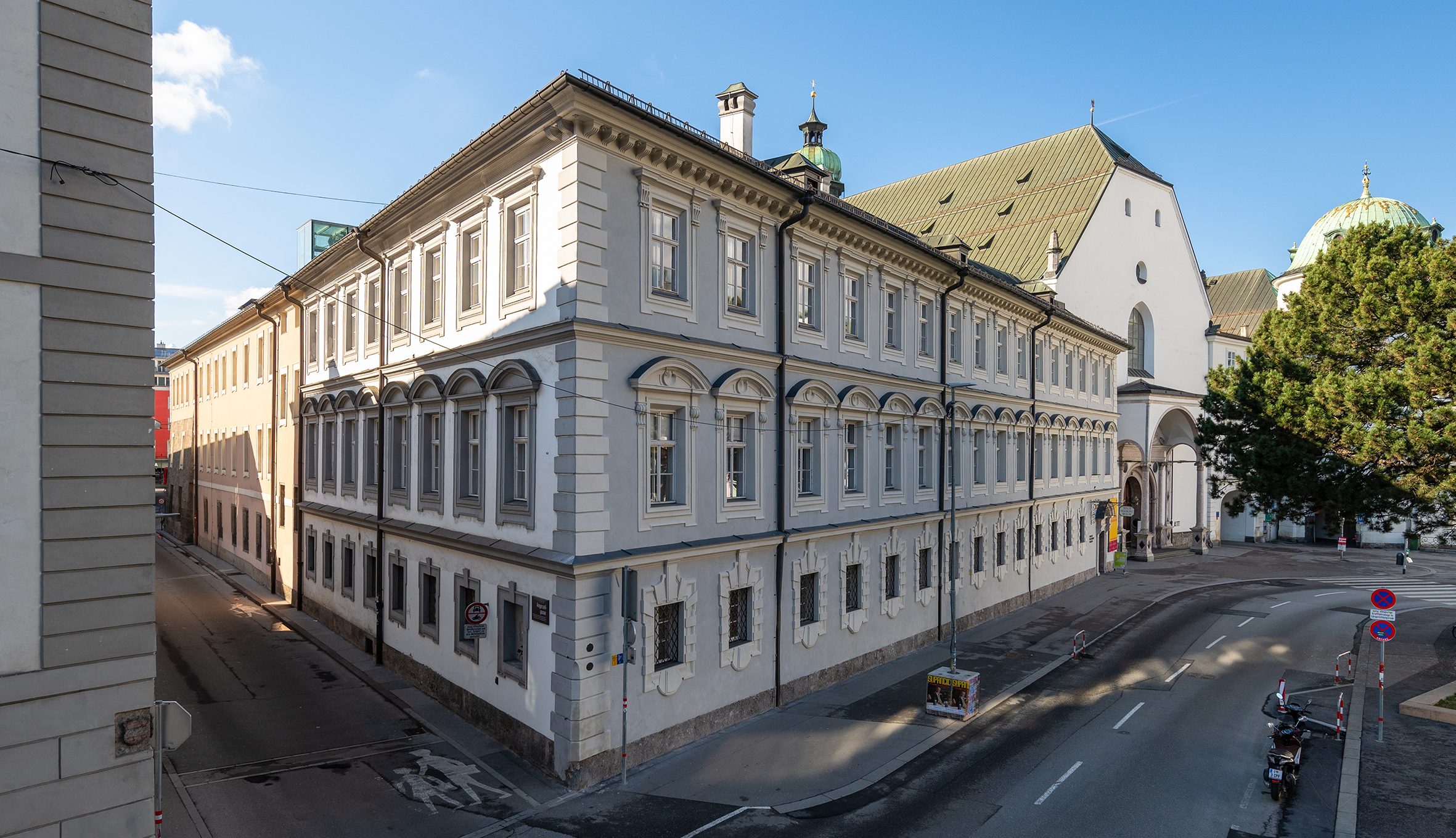The interactive museum all about hearing in Innsbruck – for young and old.
Wilhelm-Greil-Strasse 23, 6020 Innsbruck
The AUDIOVERSUM takes young and old into the wonderful world of hearing. Look forward to impressive listening experiences for the whole family. Be excited about captivating installations and exhibits – realised with extraordinary technologies. Over 1,000 m² invite you to participate, listen, understand and marvel.
Special exhibition “How animals hear
The animal kingdom is full of aural surprises. Whether green grasshoppers, grey pachyderms, little vampires or the giants of the sea – they all have amazing abilities to perceive their surroundings acoustically. The AUDIOVERSUM shows where their ears are located, how they track down prey and communicate with their fellow species in the new special exhibition “How Animals Hear”.
Opening hours from Tuesday to Friday: 9.00 a.m. to 5.00 p.m., Saturday, Sunday, public holidays: 10.00 a.m. to 5.00 p.m.
Closed on Monday
Further information at: http://www.audioversum.at/
The Tyrolean Folk Art Museum, which is directly adjacent to the Hofkirche, is a special cultural-historical feature with its extensive collection from historical Tyrol.
With its extensive collection, it presents remarkable facets of Tyrolean culture and their significance for the present.
Lucifer, the eerily iridescent figure from the St. Nicholas play, stands at the beginning of the museum. He opens up new perspectives for visitors and stimulates reflection. The study collection presents a wealth of objects on crafts, cottage industry and possessions. The multifaceted museum traces the lavish festivals and celebrations in the “Plump Year”. The “Precarious Life” looks at the worries and fears of the people.
The panelled parlours are a special feature. Historic Tyrolean costumes and nativity scenes from the 18th century to the present day are further highlights.
A multimedia preview impressively conveys the historical background to the Court Church and Emperor Maximilian I.
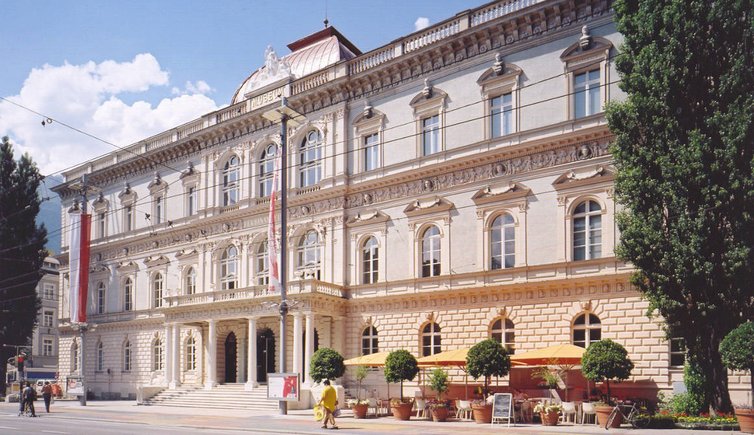
The Ferdinandeum offers a tour from the Stone Age to the present day – a journey through time spanning more than 30,000 years.
On display are masterpieces such as the “Altar of Tyrol Castle” (1370/72), the oldest preserved winged altar in the Alpine region, the “hl. Hieronymus” (around 1525) by Lukas Cranach the Elder or the reliefs of the Golden Roof (1494/1500).
Other special features are the exquisite Dutch collection – including Rembrandt and Brueghel – beautiful Biedermeier exhibits and valuable musical instruments by Jakob Stainer, among others. The Modern Gallery features works by Oskar Kokoschka, Egon Schiele, Albin Egger-Lienz, Max Weiler, Alfons Walde and Markus Prachensky.
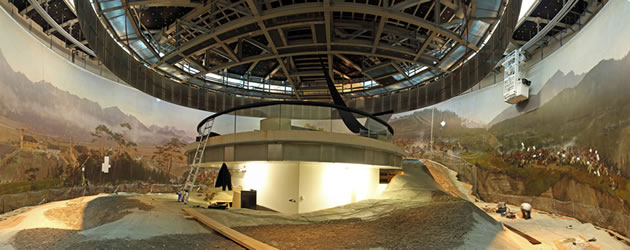
THE TIROL PANORAMA with the Kaiserjägermuseum takes a close look at the “Tyrolean myth” in all its contradictions and fascination.
It houses the largest work of art in Tyrol: the Innsbruck Giant Panorama. The panorama painting shows the Tyrolean fight for freedom on 13 August 1809 in a breathtaking 360-degree view over an area of almost 1,000 m².
The “Schauplatz Tirol” exhibition tells stories about the people, their religion, nature and politics with exciting, surprising and sometimes bizarre exhibits. An exhibition area with objects from the holdings of the Tyrolean Imperial Rifles Museum traces the eventful history of the Imperial Rifles.
THE TIROL PANORAMA is connected underground with the Kaiserjägermuseum. As the regimental museum of the Tyrolean Kaiserjäger, it provides an insight into Tyrol’s military history from the 18th to the 20th century.
THE BERGISEL – A PLACE STEEPED IN HISTORY
The museum ensemble is located on the Bergisel, within walking distance of the ski jump. More than 200 years ago, the 746-metre-high hill was the scene of a legendary battle in which Tyrolean freedom fighters put to flight a Bavarian army under French command. Today, this place is a popular excursion destination in the south of Innsbruck with a fantastic panoramic view over the provincial capital and onto the Nordkette. The Panorama Loop is part of the overall ensemble at Bergisel. The approximately 2.2 km long trail starts at the museum and runs around the Bergisel. The circular walk impresses with its diverse views of the city and nature and also builds a bridge between history and the present.
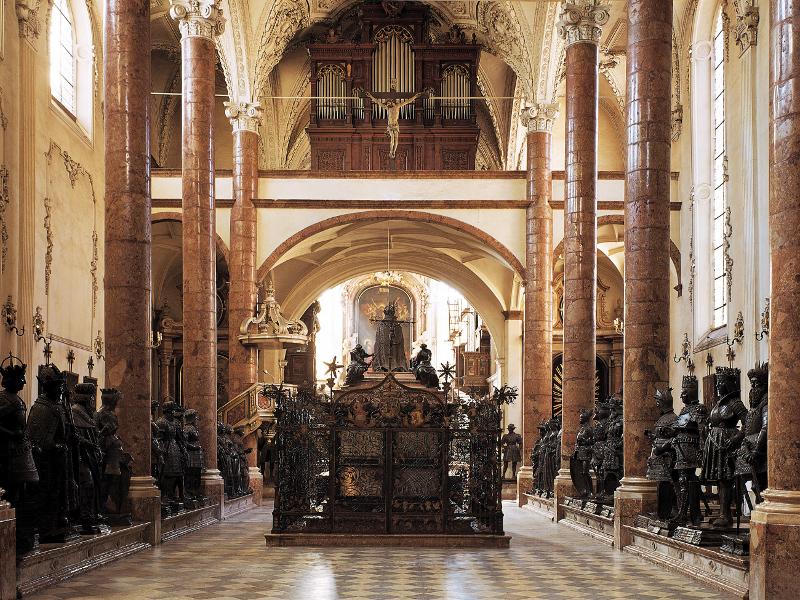
With the tomb of Emperor Maximilian I, the Innsbruck Court Church, also known as the Schwarz-Mander Church, is Tyrol’s most important monument to art and one of the most magnificent imperial tombs in Europe.
28 larger-than-life bronze statues representing the relatives of Emperor Maximilian and his models flank the high tomb. Marble reliefs depicting scenes from the Habsburg’s life adorn the cenotaph. Other attractions in the Hofkirche include the Ebert organ, which is more than 450 years old, Andreas Hofer’s funerary monument, and the Silver Chapel with its silver altar and the tombs of Archduke Ferdinand II and his wife Philippine Welser.
The Court Church is evidence of a European court art that went far beyond the German-speaking area, for which Maximilian I and Ferdinand I employed the best artists of their time, such as Albrecht Dürer, Peter Vischer the Elder, Alexander Colin and others. The court art in Innsbruck, which was influenced by the Habsburgs, is international, but also connected to local traditions. Hardly any other ruler figure has remained so vivid in the memory of the population as Maximilian I (1459-1519). His name is associated with Innsbruck’s central position in Europe at that time.
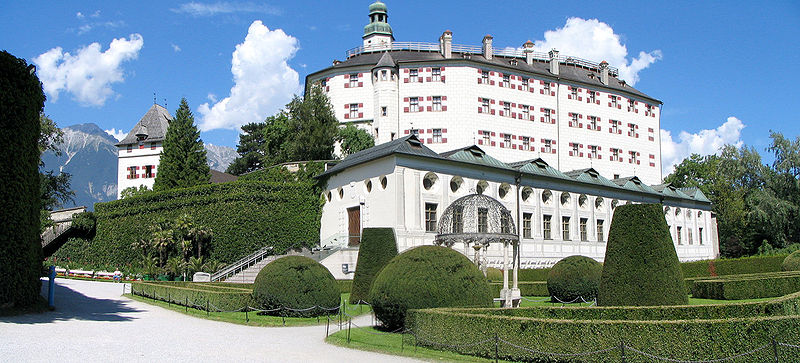
Surrounded by an idyllic palace garden, Ambras Castle lies high above Innsbruck.
It was first mentioned in the 11th century and fell to the Habsburgs in 1363, who later expanded it into a magnificent palace.
The magnificent Ambras art collections with the Wunderkammer, the Rüstkammern and the Antiquarium, founded by Archduke Ferdinand II, are still housed in the castle today. More than 200 paintings are on display in the Habsburg Portrait Gallery, including works by famous artists such as Lukas Cranach, Peter Paul Rubens, Anthonis van Dyck and Diego Velásquez. The ground floor of the High Castle houses a collection of late medieval sculptures and the George Altar of Emperor Maximilian I.





